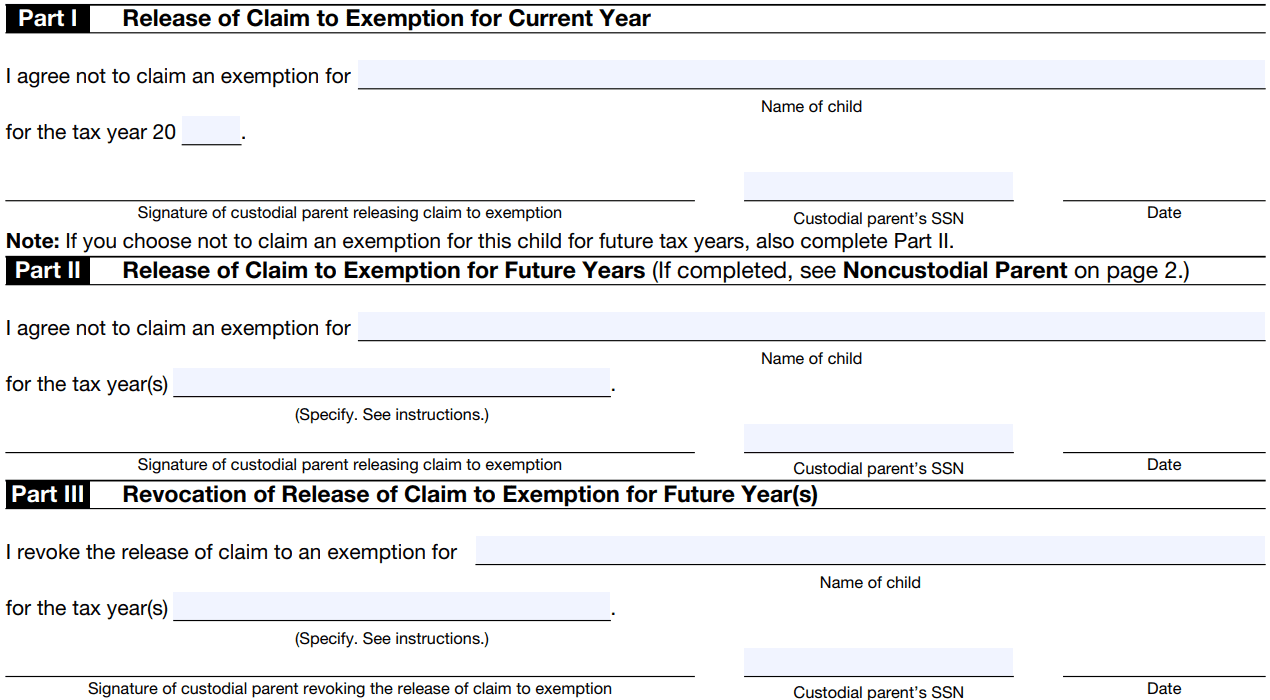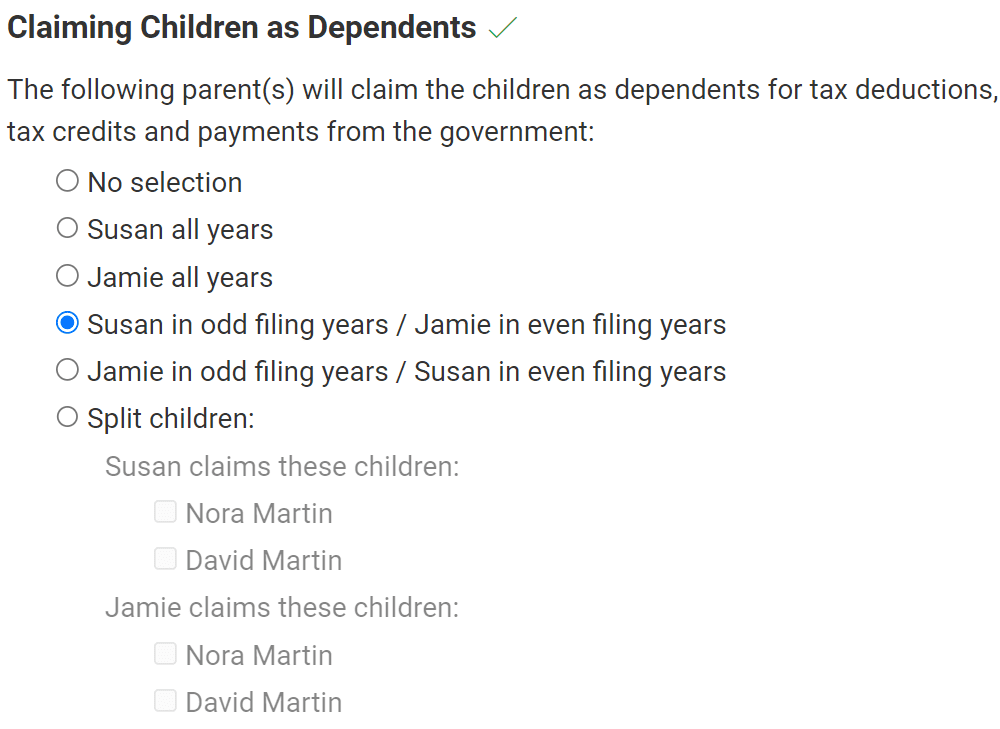IRS Form 8332: Questions, Answers, Instructions
Divorced or separated parents in the United States may reach agreement on which of you will claim a tax exemption for your child. Form 8332 lets you make that change.
What is Form 8332?
When a custodial parent files their taxes, they may use Form 8332 to change which parent claims the tax exemption. The change may go in either direction:
If the custodial parent has the exemption, they use this form to give the exemption to the noncustodial parent.
If the custodial parent has already given the exemption to the noncustodial parent, they use this form to claim it for themselves again.
Learn more about when a noncustodial parent may claim the exemption and who claims when parents have 50/50 custody.
Why the exemption matters
The dependent exemption is linked to the child tax credit, the additional child tax credit and the credit for other dependents. Consult IRS Publication 501.
The personal exemption no longer exists. It used to mean that, the more children, the less income tax a parent would owe. Tax year 2017 was its final year.
Does the custodial parent have to sign Form 8332?
Yes if they agree to the change
Custodial parents: If you're giving up the tax exemption to the noncustodial parent or if you're reclaiming it from them, yes, you must must complete and sign Form 8332. Later, when you're filing taxes, the parent claiming the exemption for that tax year must attach this form to their tax return.
Otherwise, no, you don't need the form at all
If you're not changing which parent gets the exemption, you don't need this form when you file your taxes.
Nor do you need to fill out this form for a nonparent. A relative who's cared for your child for at least half the year (e.g., a grandparent) may be able to claim your child on their taxes, and they won't need Form 8332 from you.
Form 8332 instructions
Custodial parents fill out the form. Have the Social Security numbers for yourself and the other parent.
At the top of the form, fill out the noncustodial parent's name and Social Security number.

Then fill out the relevant section: either release your exemption (i.e., you won't claim the exemption) or revoke your previous release (i.e., you'll claim the exemption going forward).
 You can customize this with Custody X Change.
You can customize this with Custody X Change.
Once the custodial parent fills out this form, they must notify the noncustodial parent by giving them a copy. If they're unsuccessful in contacting the noncustodial parent, they should document their attempt, in case authorities question it later.
The change takes effect for both parents' taxes in the following calendar year. The person claiming the exemption must attach Form 8332 when they file their taxes for that year.
For example, if the custodial parent provides the other parent with a copy of the form at some point during 2025, the parent getting the exemption should attach a copy of the form when they file their 2026 taxes (which would typically be due in early 2027).
Do I submit my divorce decree as proof?
No. Don't send the IRS a copy of your divorce decree or separation agreement, even if it specifies who should get the exemption.
Contempt of court for Form 8332 failures or violations
Follow any instruction in your divorce decree related to the tax exemption for your child.
If one parent doesn't follow the decree, the other can complain to the court that issued it, and the court may find the parent in contempt. Punishment for contempt of court follows state law and local procedure. The IRS is not involved in judging this violation nor in imposing consequences.
So, don't ignore the court order. If there's an issue following the order, talk to the other parent and try to reach a new agreement. As long as your taxes are prepared according to federal law and neither parent complains to family court, you won't be found in contempt of court.
Designating who can claim the child on taxes in your parenting plan
Designating who can claim the child on taxes in your parenting plan takes away any uncertainty.
In the Custody X Change app, click the "parenting plan" tab. More than 25 categories of parenting provisions will appear.
 You can customize this with Custody X Change.
You can customize this with Custody X Change.
Click the "taxes" category, then choose an option or write in your own.
 You can customize this with Custody X Change.
You can customize this with Custody X Change.
Including a tax provision in your parenting plan will save you a lot of time and stress.
